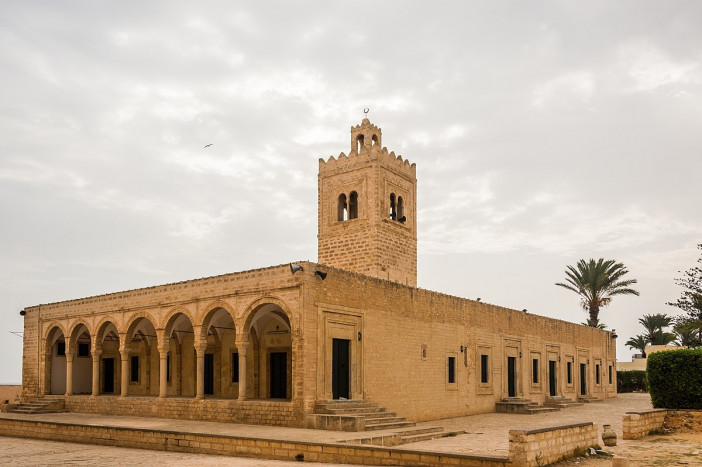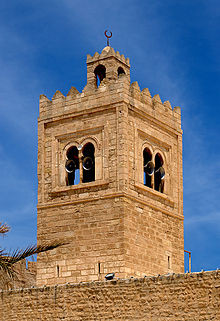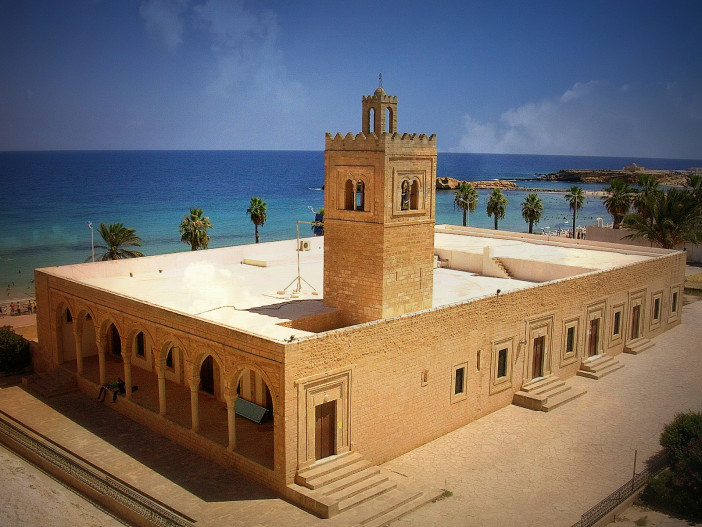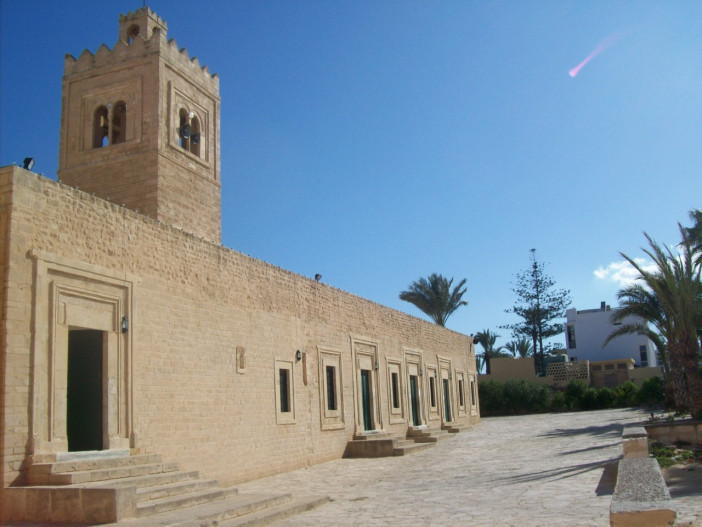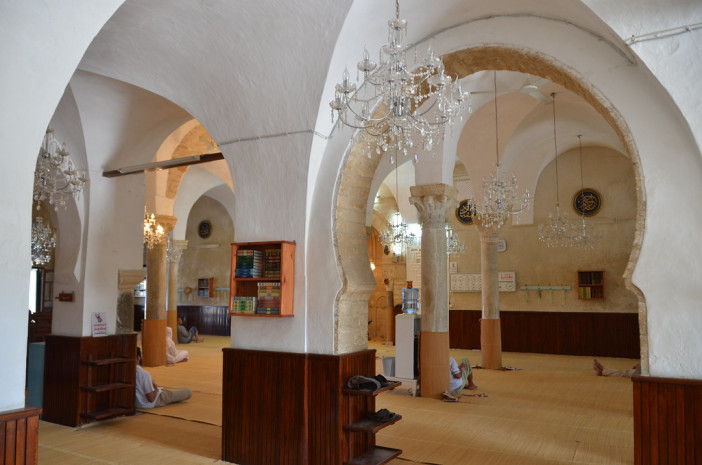The Great Mosque of Monastir
History
The current mosque has a prayer room and a minaret, but no courtyard. It has expanded and changed over time. After four different construction stages, this is what it looks like today. During the first construction stages of the 9th century, vaulted ceilings and round arches supported by cross-pillars were built in the hall.
During the 11th century, the room’s south-east expansion included the addition of columns with arched vaults atop them. Development of the mihrab began during this time period. The mihrab is a semi-cylindrical niche with a rib-shaped vault decorated in Zirid style. Floral moldings are used to decorate it, along with Kufic inscriptions.
The construction of the square minaret and the addition of two nave to the northwestern part of the mosque continued under the Hafsid dynasty. In the 18th century, a corridor was added along one of the outer walls of the mosque to complete the structure. In medieval Ifriqiya architecture, it is rare to see a dome in the mihrab, but this also applies to the Monastir Mosque.
Urban and Architectural
The Great Mosque of Monastir is a historic mosque located in Monastir, Tunisia. Overall the sea, the mosque near the monasteal ribat is characterized by a flat stone external facade, a frame around the window and the door, and a arches running along Mihrab.
Description
This monastir mosque is one of the most interesting and largest monuments in the region. It's a really great place to visit and there is a lot of history surrounding this mosque.
References
https://www.qantara-med.org/public/show_document.php?do_id=676&lang=en
https://www.wikiwand.com/en/Great_Mosque_of_Monastir
https://mapcarta.com/W96261605
Details
Location
Monastir, Tunisia
Worshippers
400
Owners
The Tunisian Government
Year of Build
9th century; extensions: 11th, 16th and 18th centuries
Area
1000
Drawings
Map
History
The current mosque has a prayer room and a minaret, but no courtyard. It has expanded and changed over time. After four different construction stages, this is what it looks like today. During the first construction stages of the 9th century, vaulted ceilings and round arches supported by cross-pillars were built in the hall.
During the 11th century, the room’s south-east expansion included the addition of columns with arched vaults atop them. Development of the mihrab began during this time period. The mihrab is a semi-cylindrical niche with a rib-shaped vault decorated in Zirid style. Floral moldings are used to decorate it, along with Kufic inscriptions.
The construction of the square minaret and the addition of two nave to the northwestern part of the mosque continued under the Hafsid dynasty. In the 18th century, a corridor was added along one of the outer walls of the mosque to complete the structure. In medieval Ifriqiya architecture, it is rare to see a dome in the mihrab, but this also applies to the Monastir Mosque.
Urban and Architectural
The Great Mosque of Monastir is a historic mosque located in Monastir, Tunisia. Overall the sea, the mosque near the monasteal ribat is characterized by a flat stone external facade, a frame around the window and the door, and a arches running along Mihrab.
Description
This monastir mosque is one of the most interesting and largest monuments in the region. It's a really great place to visit and there is a lot of history surrounding this mosque.


